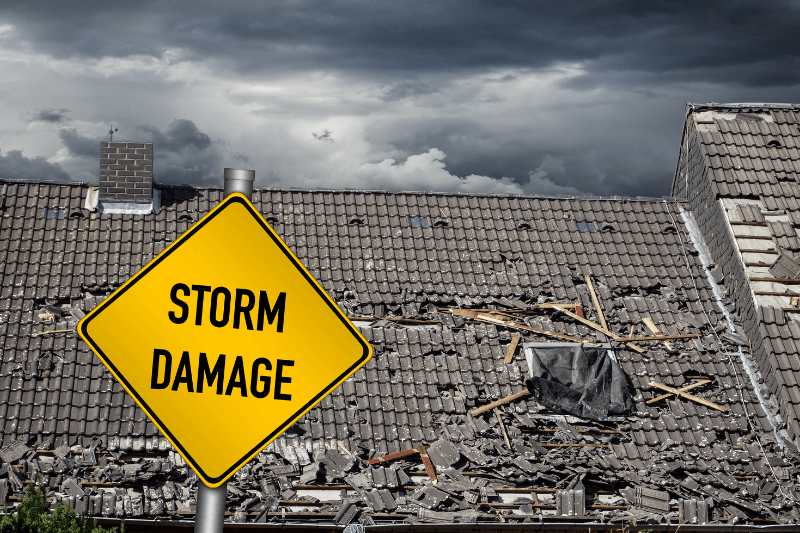
Living through a storm in Florida can be a nerve-wracking experience, primarily when flood damage affects your home. Dealing with flood insurance claims’ aftermath and hassle can be incredibly challenging. This process is where a knowledgeable realtor can be invaluable.
They may even introduce you to a cash buyer willing to make a cash offer on your property, alleviating some of the stress and providing a swift solution. This process can be ideal for many homeowners, bypassing lengthy repairs and insurance processes.
You may be considering selling your storm-damaged house but need help figuring out where to start. If that’s your situation, don’t fret. This article aims to provide an insightful guide on dealing with a house damaged by a storm and navigating the selling process.
Guide To Selling a House With Storm Damage
Selling a storm-damaged house might feel overwhelming, especially if you’re also coping with the emotional distress caused by the storm. Here’s a comprehensive guide to help you navigate this process:
- Assess the Damage: The first step is to evaluate the extent of the storm damage. This will help you understand what you’re dealing with and determine the necessary repairs. A professional home inspector can thoroughly assess your property’s condition.
- File an Insurance Claim: If you have homeowners insurance that covers storm damage, your next step should be to file a claim. Make sure to document the damage extensively, using pictures and videos, and include professional estimates for the repair costs. Your insurance company will then send an adjuster to verify the claim and determine how much they will cover.
- Repair the Damage or Sell As-Is: Once you know how much your insurance will cover, you can decide whether to fix the damage before selling the house. While repairs may increase your home’s market value, they require time and money. On the other hand, selling as-is can be quicker, but you may have to accept a lower offer.
- Get a Property Appraisal: Whether you repair the damage or decide to sell as-is, getting a professional appraisal is a wise move. This will give you an idea of your property’s current market value. Be mindful, however, that the storms may damage your house appraisal value, especially if extensive repairs are needed.
- Find the Right Buyer: Selling a storm-damaged house may not appeal to all buyers, but some specialize in purchasing damaged or distressed properties. These include real estate investors or companies that buy houses as-is. Consider contacting us if you’re in Alamo Heights or Balcones Heights and looking to sell your storm-damaged home quickly. We can help you sell your house in Alamo Heights or Balcones Heights.
- Disclosure: Full disclosure is a legal and ethical requirement when selling a house with storm damage. Be sure to inform potential buyers about the damage and any repairs you’ve made.
Honesty about the extent of the damage and any renovations done is essential for home sellers, as it can build trust with prospective buyers. Providing these buyers with a detailed account of the damage and subsequent repairs can give them a clear understanding of the home’s condition, allowing them to make a well-informed decision about the sale price.
Real estate experts often emphasize the importance of transparency, especially when there could be hidden damages, such as water damage within the walls, under the flooring, or even structural damage to the foundation or frame of the house.
Lenders also appreciate this clarity, making evaluating the property for potential loans to prospective buyers easier. Selling a house with storm damage can be challenging. Still, by working with real estate professionals and ensuring all potential issues, even those not immediately visible, are considered and addressed, it’s possible to navigate this complex process successfully.
Remember, we’re here to support home sellers every step of the way.

What To Do if a Storm Has Hit Your House
Experiencing a storm can be traumatic, and the aftermath can leave homeowners feeling lost, especially if their homes have suffered significant damage. Here’s a step-by-step guide on what to do if a storm hits your house:
- Ensure Safety: Your and that of your family is paramount. After the storm, check the home for any imminent dangers, like falling debris or exposed electrical wires.
- Document the Damage: Before starting any cleanup, take clear pictures and videos of all the damages. This documentation will be essential when you file an insurance claim.
- Contact Your Insurance Company: Immediately notify your insurance provider about the damage. They’ll guide you through the claims process and send an adjuster to assess the damage.
- Secure Your Property: To prevent further damage, secure your property. This may involve boarding up broken windows, tarping damaged roofs, or removing fallen trees.
- Begin Cleanup and Repairs: After the insurance adjuster has visited, you can start the cleanup and repair process. Ensure you keep all the receipts for this process, as your insurance may cover some of these costs.
Remember to document the structural damage and any damage to personal property. The detailed inventory of damaged items and their approximate value will be helpful when filing a claim for personal property damages.
Should You Repair All Storm Damage
When a storm hits your home, one of the big questions is whether to repair all storm damage before selling. You should make a list of things to fix in your house, and then the decision depends on several factors:
- The extent of the Damage: Minor damage, like missing shingles, can be efficiently and economically repaired. However, major structural damage may require extensive work and significant financial investment.
- Your Financial Situation: If you have the resources to repair the house before selling, doing so could lead to a higher selling price. However, if funds are tight, you might sell the home as-is.
- The Housing Market: If you’re in a sellers’ market, buyers might be willing to take on a project house and deal with the repairs themselves.
- Time Constraints: Repairs can be time-consuming. If you need to sell quickly, selling as-is might be more practical.
- Buyers’ Perception: Remember that visible damage can discourage potential buyers. Making necessary repairs could make the property more appealing.
Dealing with severe damage to your storm-damaged home, primarily caused by strong winds, can be overwhelming. It’s essential to assess every part of your property, from the gutters that might have been torn apart to any structural issues that might not be immediately visible.
In the local market, where buyers might be wary of properties that have experienced damage, it’s a strategic move to offer an allowance to potential buyers. This enables them to undertake the necessary repairs according to their preferences.
Does a Natural Disaster Affect Property Value
Natural disasters, including storms, can significantly impact property values. Depending on the severity and frequency of these events, your home’s market value may decrease for several reasons:
- Perception of the Area: potential buyers might perceive the area as high-risk after a disaster, leading to decreased demand.
- Cost of Insurance: Insurance premiums can be high in areas prone to natural disasters, discouraging potential buyers.
- Frequency of Disasters: If the area is prone to recurring storms or natural disasters, it can deter home buyers, impacting property values.
- Physical Damage to the Property: Storm damage to a house can decrease value, especially if the damage isn’t fully repaired. This can be particularly true if storms may damage your house appraisal.
- Depreciation of Neighborhood: If multiple properties suffer damage and homeowners decide not to repair them, the entire neighborhood’s appeal could decrease, reducing property values.
Should You Take Your Home off the Market if a Storm Has Hit It?
If your home is on the market and gets hit by a storm, the decision to keep it listed or take it off the market should be carefully considered.
- Consider the Extent of Damage: If the damage is minor and can be quickly repaired, you might keep the house on the market. However, significant damage that would drastically affect the appearance or safety of the home might warrant temporarily removing the listing.
- Consult With Your Real Estate Agent: You can provide valuable advice. They can help assess the situation, consider the current housing market, and guide your decision. They also provide you with resources for professional cleanup and repair services or connect you with potential buyers who are specifically interested in storm-damaged properties.
- Buyer Perception: It’s important to remember that the first impression is critical when selling a house. If potential buyers’ first view of the house is post-storm damage, it might negatively affect their perception of the property.
Conclusion
Selling a house with storm damage can be challenging, but it’s not impossible. It might be beneficial to enlist the help of professionals, such as real estate agents or cash home buyers in Dallas, to guide you through the process. Preparation is critical in deciding to sell your house in Balcones Height.
Understanding your situation, exploring your options, and making informed decisions can help you sell a storm-damaged house successfully.
